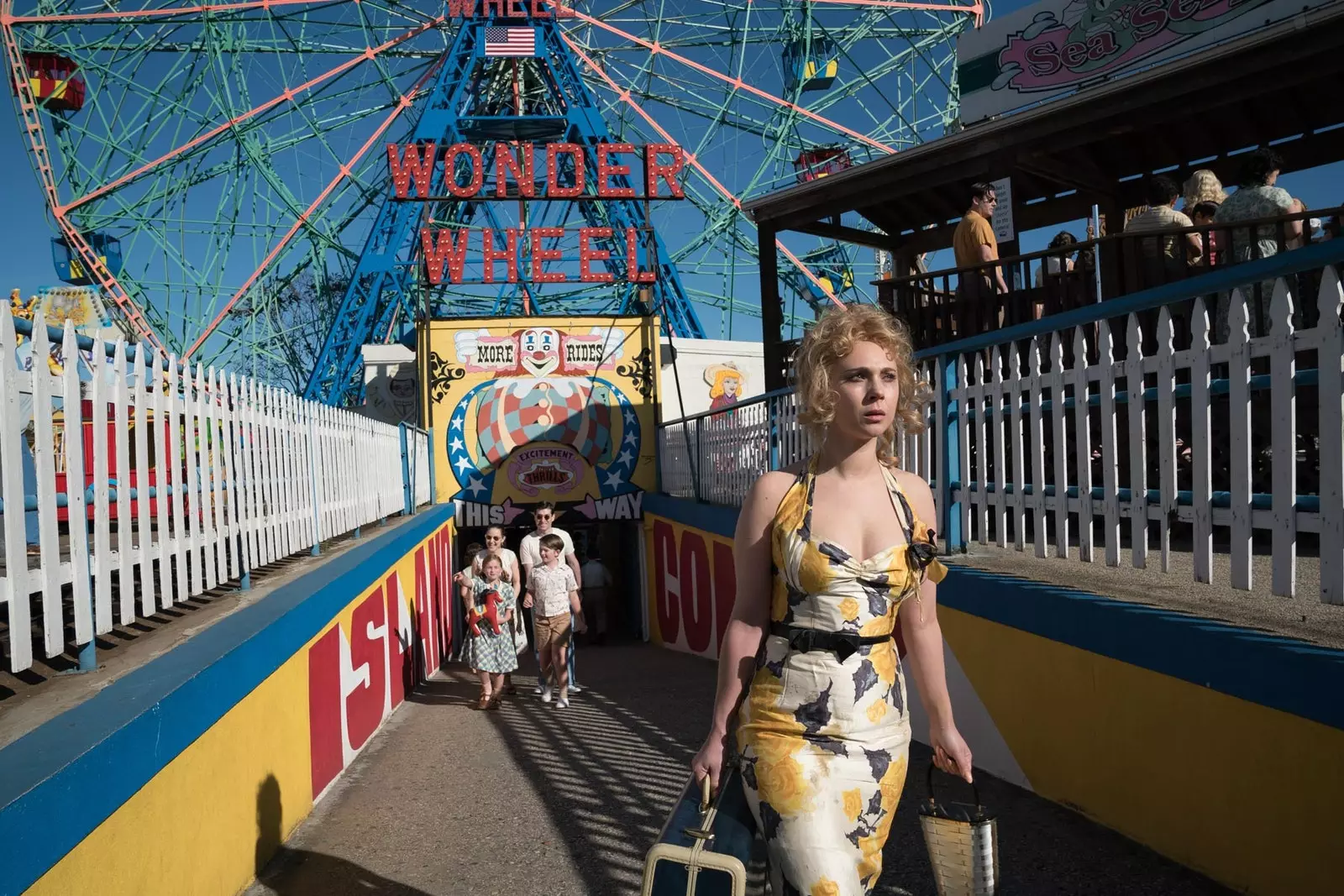
Juno Temple in 'Wonder Wheel'.
A smiling face looks out from almost any corner on Coney Island. It is the emblem of this neighborhood of beach, amusement parks and signature hot dogs (Nathan's) in the southwest of Brooklyn. A happy face that laughs mischievously. There is no naivety in his laugh, nor in his look. It almost seems like a reinterpretation of the Joker, Batman's enemy, making fun of the seriousness of Gotham, that comic New York.
And in his face the values of this vacation spot, recreation area, rest and fun of the New Yorkers that they came to call "Sodom by the Sea" and that is now being reborn from an abandonment of almost five decades thanks to the efforts of its devoted neighbors and the arrival of the urban art project **Coney Art Walls,** new attractions and concerts.
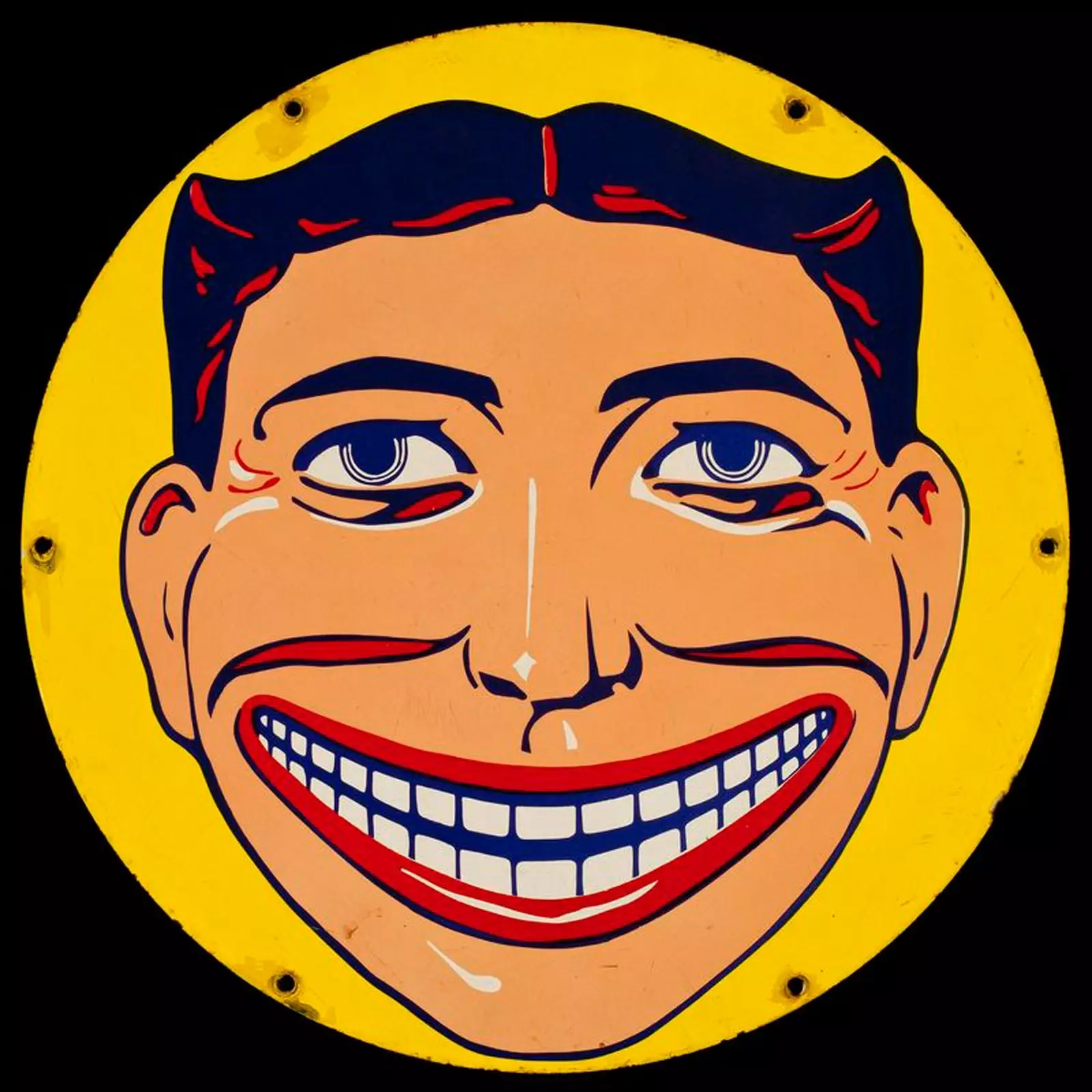
Steeplechase amusement park emblem.
“The neighborhood has struggled for decades and has lost much of the spark that once drew millions of people each summer from New York and beyond,” explains Joseph Sitt, CEO of Thor Equities, the real estate investment company, which commissioned Coney. Art Walls alongside curator Jeffrey Ditch and has been trying to get that shine back for years. “In the long term, we want Coney to be Not only the playground of New Yorkers, but of the rest of the world”, continues Sitt, who, from an early age, was nicknamed Joey Coney Island.
In 2015, the first year of Coney Art Walls they placed 20 walls at 1320 Bowery Street, between the sea and the Coney Island amusement park, and selected a group of international graffiti artists, such as Crash, Lee Quinones, Futura, Kenny Scharf and the Barcelona Miss Van. Coney Art Walls was going to be an isolated project, but given the amount of public it attracted in 2017, it celebrated its third edition with 35 walls by the best urban artists.
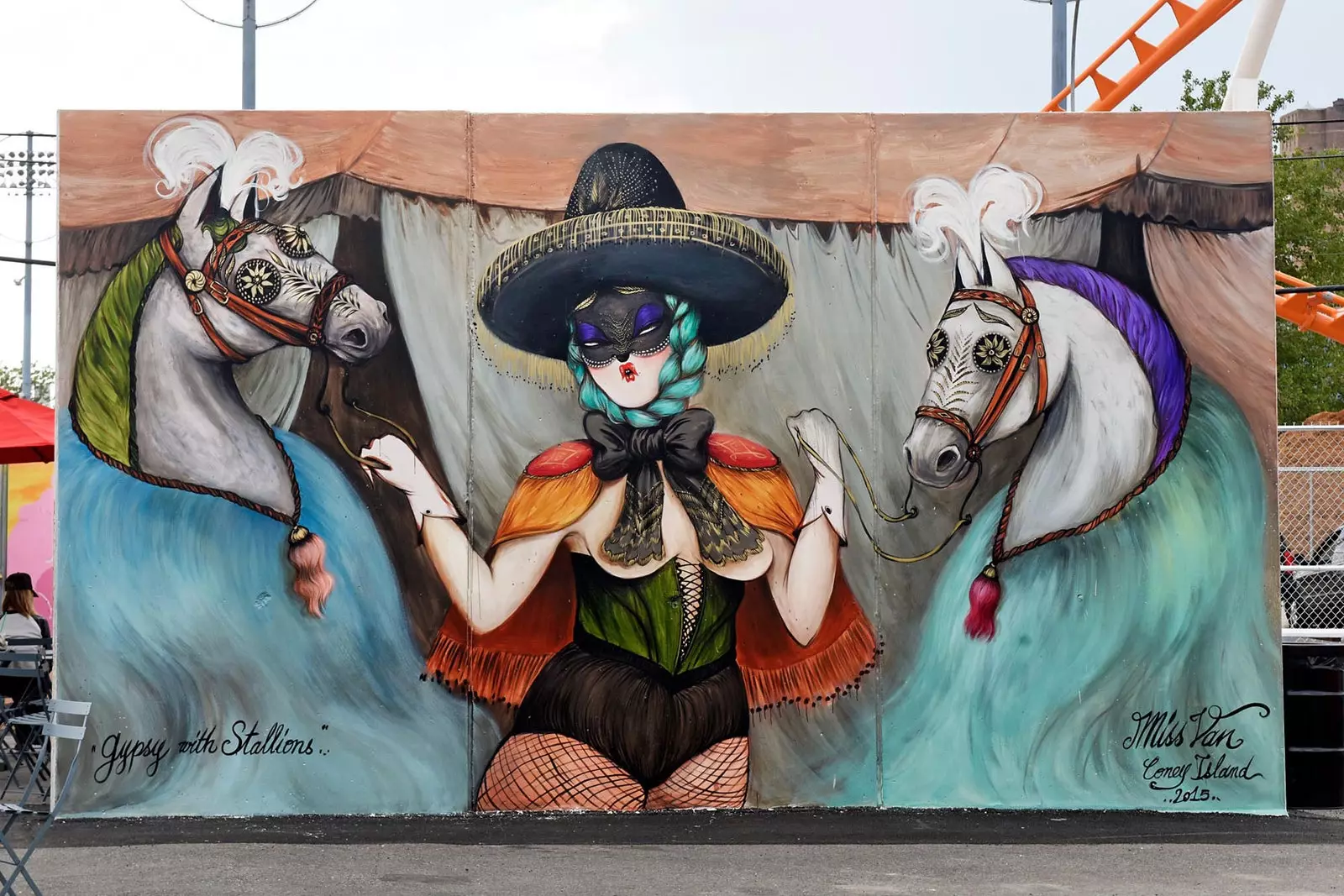
Miss Van's mural.
That was a first step to return to the neighborhood the life that she had as he described it José Martí in his 1883 chronicle, In Coney Island New York empties: “The North American newspapers are full of hyperbolic descriptions of the original beauties and unique attractions of one of those summer places, overflowing with people, dotted with sumptuous hotels, crossed by an aerial railway, nuanced with gardens, kiosks, small theaters, of breweries, of circuses, of tents, of masses of carriages, of picturesque assemblies, of traveling booths, of vendutas, of fountains”.
When Martí echoed “the blinding variety, the herculean thrust, the startling aspect of Coney Island,” the area lived a second golden age. Since this corner at the other end of Mahattan became a playground in the 1820s, it has been through more ups and downs and loops than ever before. the Cyclone, its most famous roller coaster and ancient still standing.
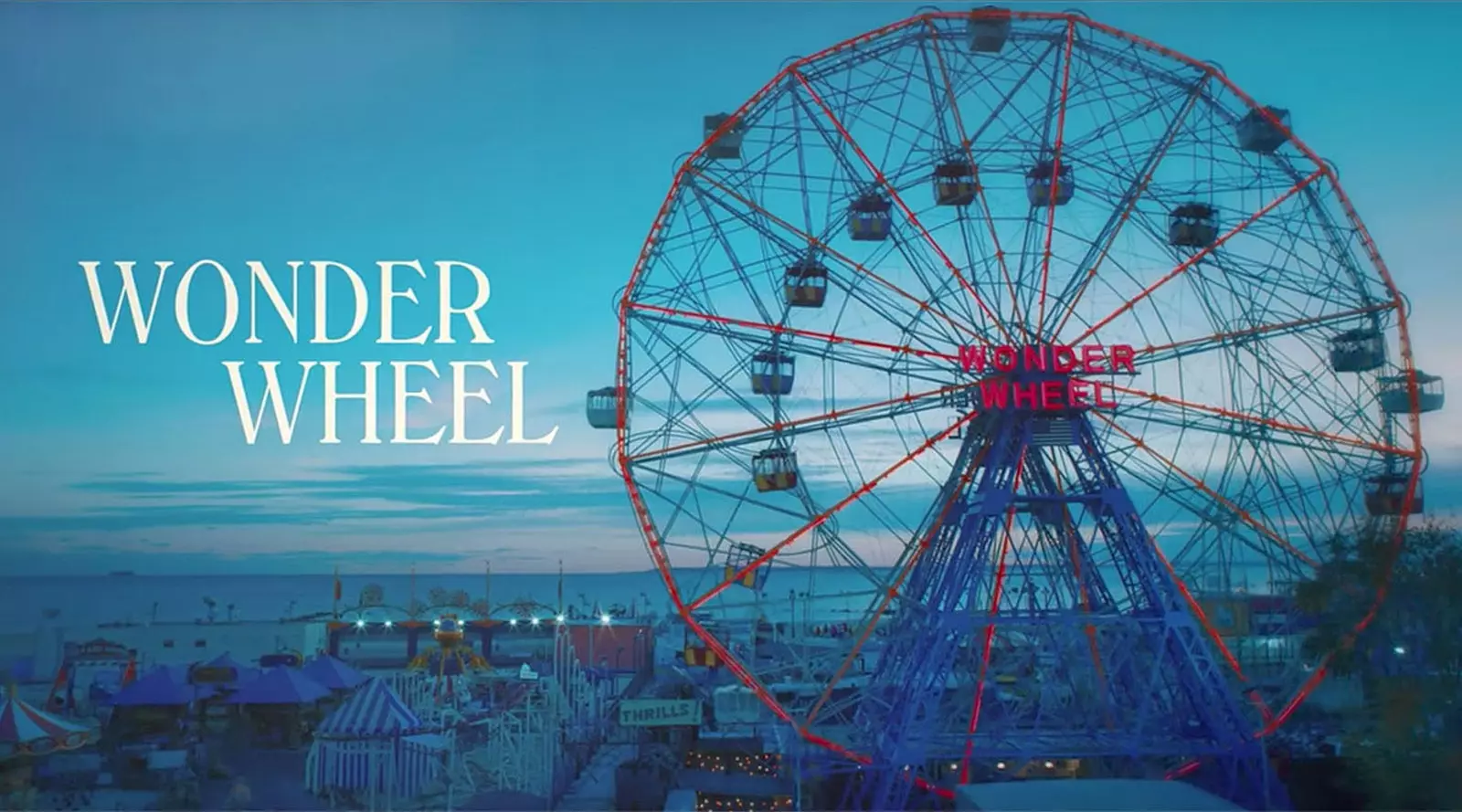
The Coney Island Ferris wheel and the Woody Allen type.
Between the late 19th century and World War II, three amusement parks were built on Coney Island: Luna Park, Steeplechase and Dreamland. There was a Ferris wheel, a merry-go-round, roller coasters, rides that imitated Méliès' trip to the moon, and even a metal tower from which they parachuted, the Parachute Jump, bottom of the Requiem for a Dream, of Darren Aronofsky (originally from Coney) and today called a historic landmark.
Coney Island went from luxury vacation spot to middle-class playground with the advent of the subway and cars. The "Nickel Empire" they renamed it, because of the five cents the subway cost. It was a freak show in which New Yorkers saw things they hadn't even imagined. As the twins from Yucatan, Pip and Flip, actually born in Georgia, and one of the many protagonists who Todd Browning found in this corner of New York to The stop of the monsters.
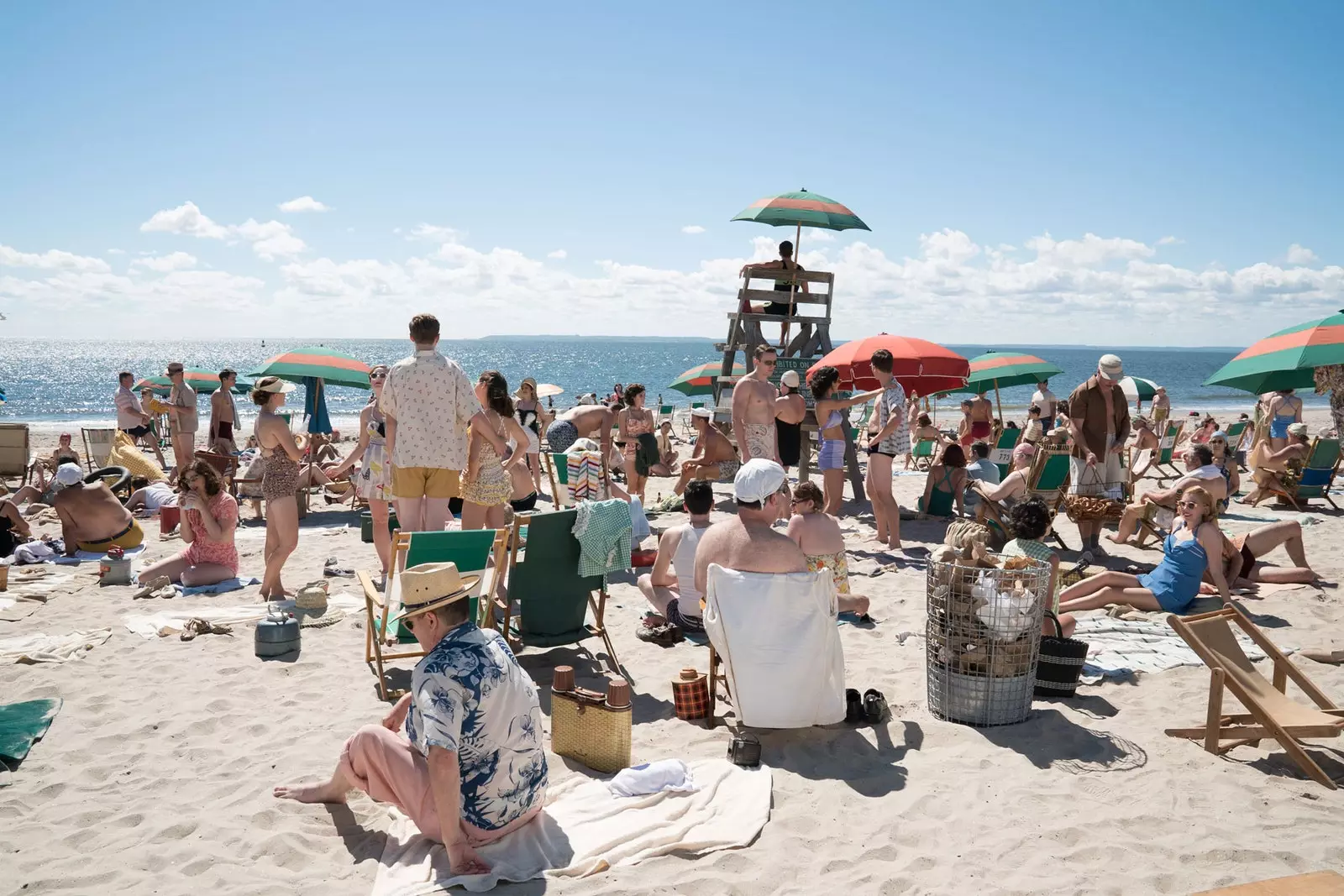
The teeming beach at Coney Island.
In 1940, Weegee, the city's shadow photographer captured thousands of sunbathers thronging the beach. The forties and fifties were still good decades for the neighborhood. The beatniks They looked for inspiration there. What Lawrence Ferlinghetti and his book of hallucinated poems by A Coney Island of the Mind (1958). The neighborhood was a swarm of ideas and freedom and the works of Walker Evans, Diane Arbus, Joseph Stella or Basquiat.
“The constant novelty of the resort made Coney Island a seductively liberating place for artists," says Robin Jaffee Frank, curator of the exhibition that the brooklyn museum dedicated to the neighborhood a year ago. "What artists saw from 1861 to 2008 here, and the diversity of ways they portrayed it, reflected the aspirations and disappointments of the era and the country. Together these pictures of wonder and menace, of hope and despair, of dreams and nightmares, they become metaphors for the collective soul of a nation.” Modern American mass culture was born there, Frank says.
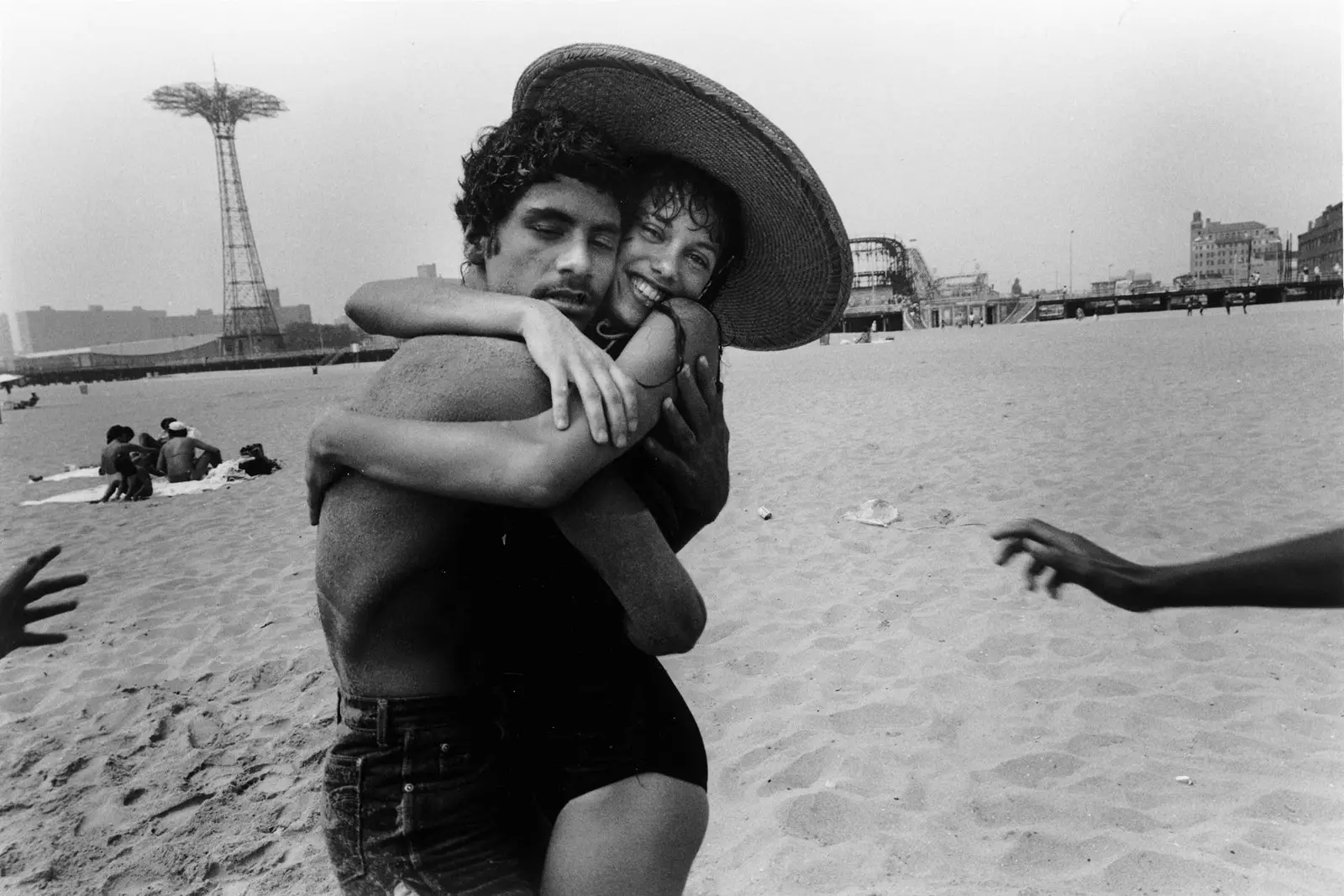
The Hug: Closed Eyes and Smile. Coney Island, 1982
Woody Allen has located Wonder Wheel, his 50th film in Coney Island, one of his favorite neighborhoods in his beloved New York. “His high point of it was long before I was born,” he says, “but when I was going it was still pretty fun. I was always impressed. There was so many colorful people, different and complex activities, It was a very vital atmosphere.” A perfect energy to place the melodrama of him, again with Tennessee Williams in the lead, for that woman **(Kate Winslet)** on the verge of her nerves.
Wonder Wheel takes place in the late 1950s, as told by its narrator, aspiring lifeguard playwright **(Justin Timberlake)** tries to explain that Coney Island isn't what it used to be. In those years it began to be felt, but it was at the end of the sixties and in the seventies of the 20th century when decline quickened and lengthened even until the first decade of the 21st century. Strolling along its wooden boardwalk even today sometimes evokes an inviting sense of decay. A crazy past is sensed in its Ferris wheel with seesaw cabins and in the screeching of its roller coaster, “a stark innocence”, as it says Patty Smith, to which she also sang Woody Guthrie, Lou Reed or Tom Waits, and it seemed like he was never going to come back.
The deterioration was the fault of the continuous fires, of the arrival of air conditioning in the houses, of the relentless hand of the urban planner Robert Moses that banned all fun and set aside much of the vacant land for residential use, and eventually social housing; It was the fault of the voracity of Fred Trump, father of current President Donald Trump, that he even sent invitations to a fictional Coney Island funeral, although he never fulfilled his aggressive real estate dreams. Together, they turned the area into a semi-abandoned place where the gangs and the mafia roamed freely, almost as Walter Hill told in The Warriors.
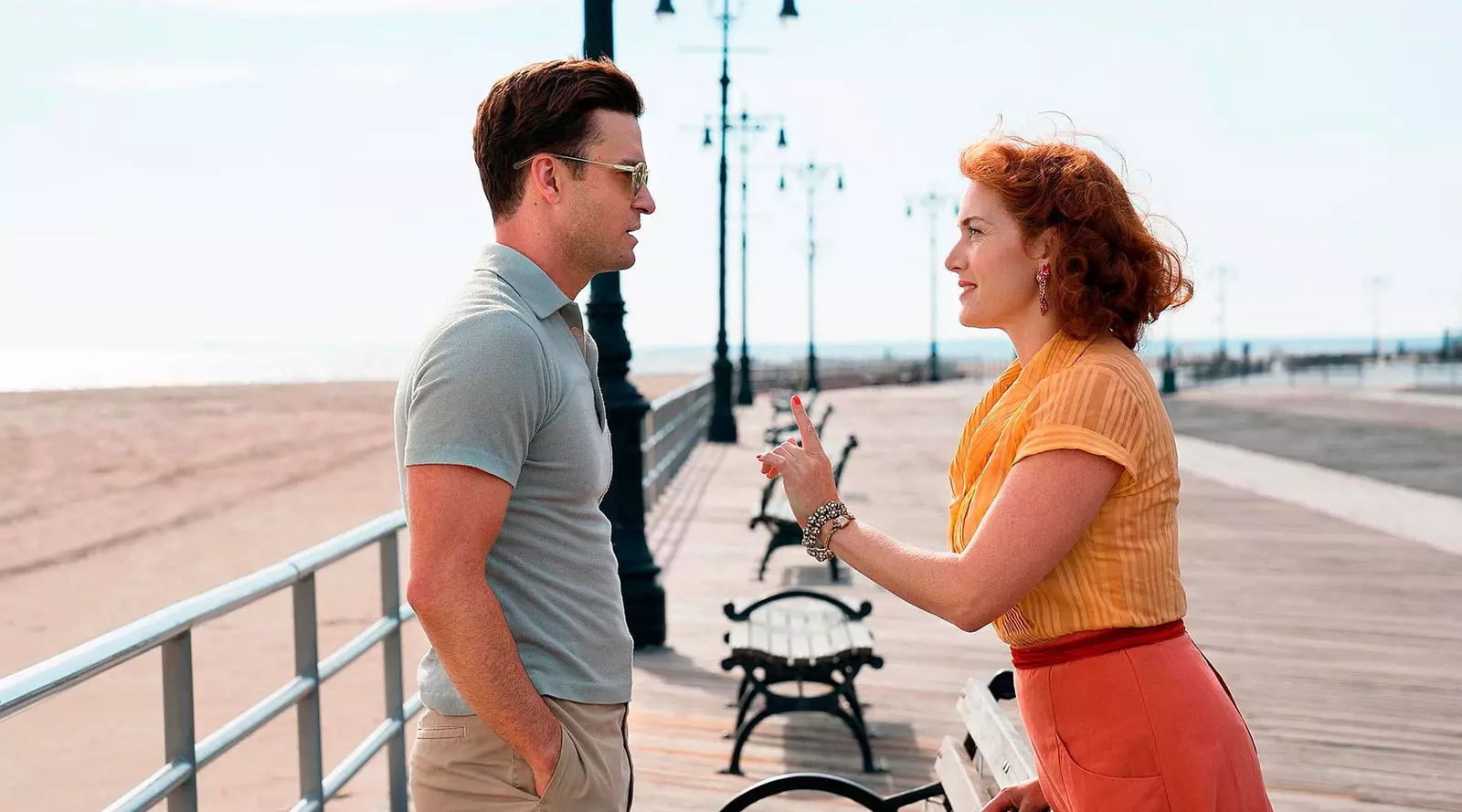
Justin Timberlake and Kate Winslet on the boardwalk at Coney.
And despite everything, on certain dates of the year, Coney Island has continued to recover that air of festive, naive and kitsch freedom. Like the first weekend of summer, when mermaids and mermen flood the boardwalk in the mermaidparade, Unofficial start of the New York summer and a parade that has been godfathers to famous supporters of Coney such as Lou Reed, Moby or Harvey Keitel. Or like the 4th of July, when Nathan's hosts his annual hot dog contest; or the first day of the year, when hundreds of fearless, hungover swimmers take to the sea to celebrate America's oldest swim club, the Coney Island Polar Bear.
According to the New York City Parks Council, 2014 was Coney Island's best year in decades: 11.45 million people visited the beach and the boardwalk in its high season. The opening of the restoration of the classic roller coaster Thunderbolt (where little Alvy Singer lived in AnnieHall), the improvement of the rest of the attractions and the promenade once again aroused the curiosity of New Yorkers and tourists. It probably won't be "Sodom by the Sea" again, but it's still the official playground of New York.
